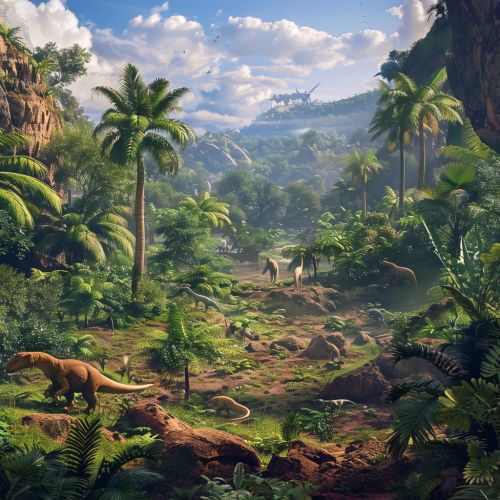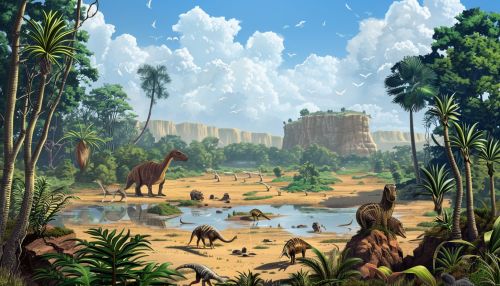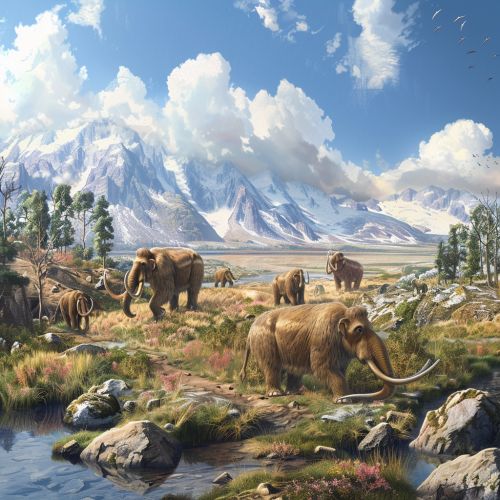Cenozoic Era
Introduction
The Cenozoic Era, also known as the Age of Mammals, is the current geological era, spanning from 66 million years ago to the present day. This era is characterized by the dominance of mammals on land and the significant evolutionary changes they underwent during this period.
Paleogene Period
The Cenozoic Era begins with the Paleogene Period (66 to 23 million years ago), which is further divided into three epochs: the Paleocene, Eocene, and Oligocene.
Paleocene Epoch
The Paleocene Epoch (66 to 56 million years ago) marks the recovery of life forms following the Cretaceous–Paleogene extinction event. Mammals began to diversify rapidly during this epoch, filling ecological niches left vacant by the extinction of dinosaurs.
Eocene Epoch
The Eocene Epoch (56 to 33.9 million years ago) is characterized by the emergence of the first large mammals, including primitive primates and horses. The climate during this epoch was significantly warmer than today, with tropical rainforests extending as far north as the Arctic Circle.
Oligocene Epoch
The Oligocene Epoch (33.9 to 23 million years ago) saw the further diversification of mammals, with the first appearance of many modern mammalian families. The climate cooled significantly during this epoch, leading to the expansion of grasslands and the evolution of large herbivores.


Neogene Period
The Neogene Period (23 to 2.6 million years ago) is the second period of the Cenozoic Era, encompassing the Miocene and Pliocene epochs.
Miocene Epoch
The Miocene Epoch (23 to 5.3 million years ago) is marked by the further diversification and expansion of mammals, with the first appearance of many modern mammalian genera. The climate continued to cool during this epoch, leading to the further expansion of grasslands and the evolution of large herbivores and predators.
Pliocene Epoch
The Pliocene Epoch (5.3 to 2.6 million years ago) saw the further diversification of mammals, with the first appearance of many modern mammalian species. The climate during this epoch was similar to today's, with the first major glaciations occurring towards the end of the epoch.
Quaternary Period
The Quaternary Period (2.6 million years ago to the present) is the current period of the Cenozoic Era, encompassing the Pleistocene and Holocene epochs.
Pleistocene Epoch
The Pleistocene Epoch (2.6 million to 11,700 years ago) is characterized by repeated glaciations, or ice ages, which had a profound impact on the Earth's climate and life. Many large mammals, such as mammoths and saber-toothed cats, evolved during this epoch, only to go extinct at its end.
Holocene Epoch
The Holocene Epoch (11,700 years ago to the present) is the current epoch, marked by the rise of human civilization and the significant impact humans have had on the Earth's ecosystems.


